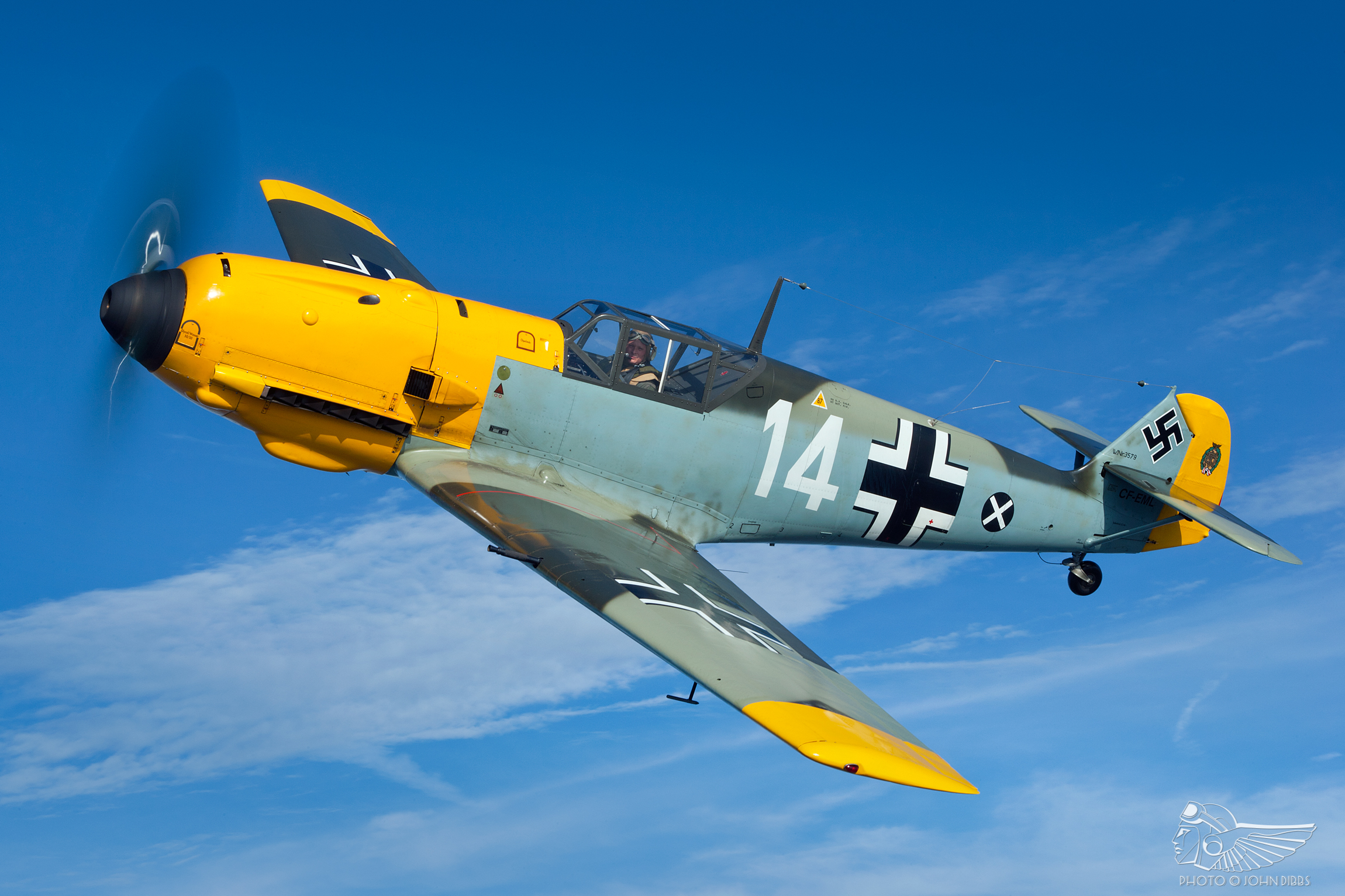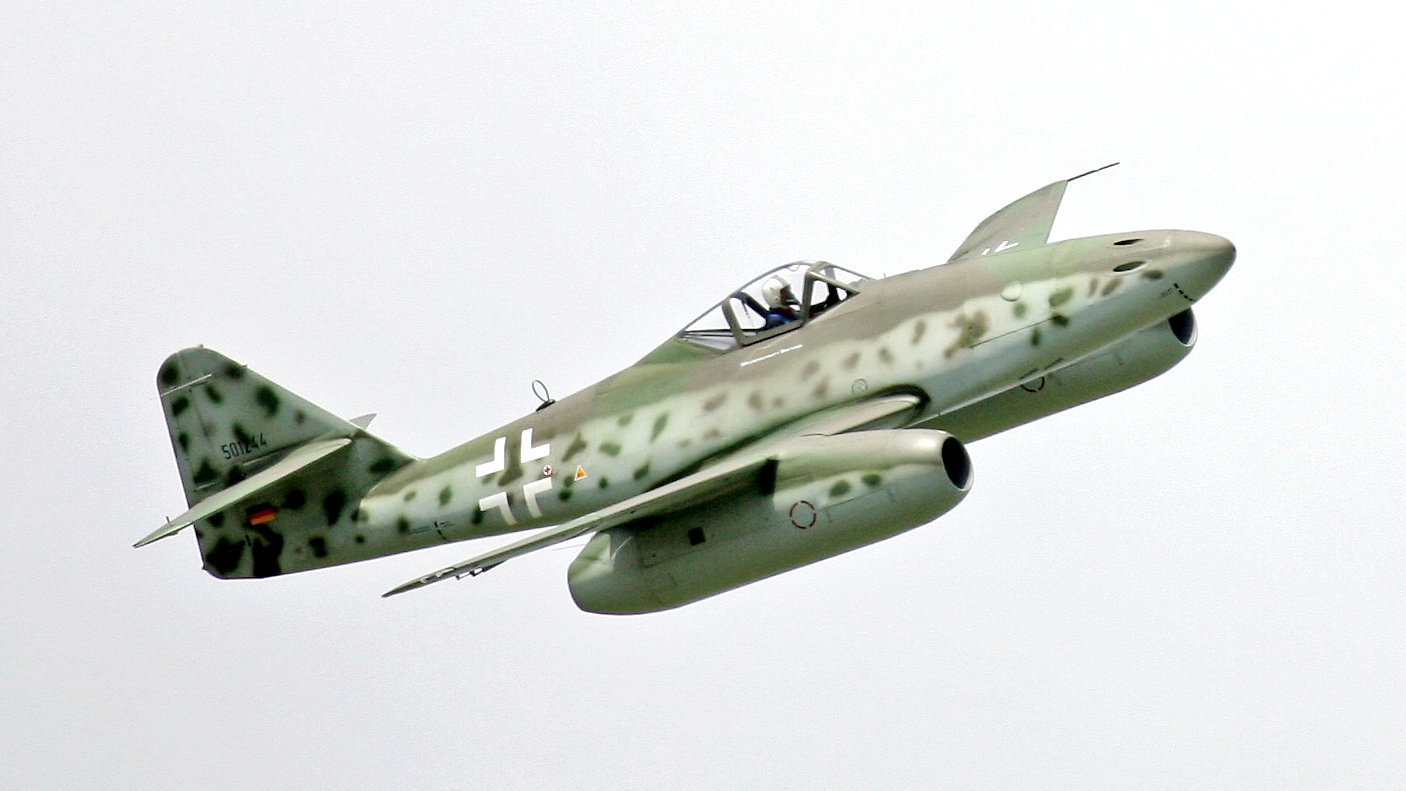The German Luftwaffe was the best airforce of its time. German engineering couldn't be rivaled. They created and designed revolutinonary aircraft. From the first Jet fighter, to the only rocket fighter in WWII. We have them here.

In real life the flight characteristics of this plane were remarkable the F model is considered the pinnacle of Bf 109 development having the nices flying characteristics of all versions It has empty weight of 2,390 kg, and gross weight of 2,900 kg. Powered by a1,350 hp the Daimler-Benz DB 601 inverted-vee engine the BF 109 F4 ha a power to weight ratio of a giving of 0,46 It reaches a maximum speed of 624 km/h (388 mph) and an impressive rate of climbof 3,000 m (9,845 ft)/2.6 min. It also ha a high ceiling of 12,000 m (39,375 ft), bu a low range of combat of 850 km (530 mi with a drop tank limiting its usefulnessas a local high altitude interceptor.In real life this plane although impressive ha its limitations, it could do well vs any alliedfighter below 6,000 m and above 3,000 m It could out turn a P-51D and out-climbit but it could not out zoom climb, outru or out dive a P-51D or a P-47D at high altitude We have to remember that the Franz(F version of 109) appeared because th Spitfire MK.V was performing better tha the Emil version the BF 109 E in the crossChannel duels after the Battle of Britain The F version regained the edge over th Spitfire MK V at high altitudes. The 10 faced in the first year of the Sovietinvasion a massive score as they facedoutdated soviet aeroplanes like the I-16 but also performed well against the Lagg-3sand Yaks-1. The F model improved in powe and speed on the G1 Gustav version with a1,475 hp DB 605A Engine entering comba on July 1942 but it had not improvedhandling characteristics over the F model.

The Messerschmitt Me 262 was a German jet fighter, fast bomber and reconnaissance aircraft of the WWII era. It was the world's first mass-produced jet fighter and the first jet aircraft to see combat. The first serial variant, the Me 262 A-1a, unofficially known as 'Schwalbe', arrived for flight testing in Lechfeld in July 1944. The construction used generic alloys, was almost fully riveted and its weight was rather high, all for the sake of ease of mass production. The Jumo 004B-1 jet engine (later B-2 and B-3) also housed a 2-stroke Riedel motorcycle engine, used as a starter. Two small 17-liter fuel tanks were used to power the starter. The rest of the fuel was housed in the fuselage. Two main and two extra fuel tanks were used. Main tanks held 900 liters of fuel, the nose tank had 170 liters and the rear tank held 600 liters. Radio equipment included the FuG 16ZY radio (later replaced with the FuG 15) and the FuG 25a IFF set. The 262 was armed with four 30 mm MK 108 cannon with 100 rounds per gun for the top pair and 80 rounds per gun for the bottom pair. The pilot was protected by a 90 mm armoured glass and 15 mm armoured plating on the sides and back.The Me 262 A-1 was easier to fly than the Bf 109G. Considering the great range of available airspeeds, the cockpit equipment was rather sparse. Although the turn radius for the jet fighter was significantly wider than that of a piston fighter, it could better retain high speeds in a turn. Its acceleration was much worse than that of a piston plane, but the Me 262 had an incredible dive rate, which could occasionally threaten going past Mach 1.

